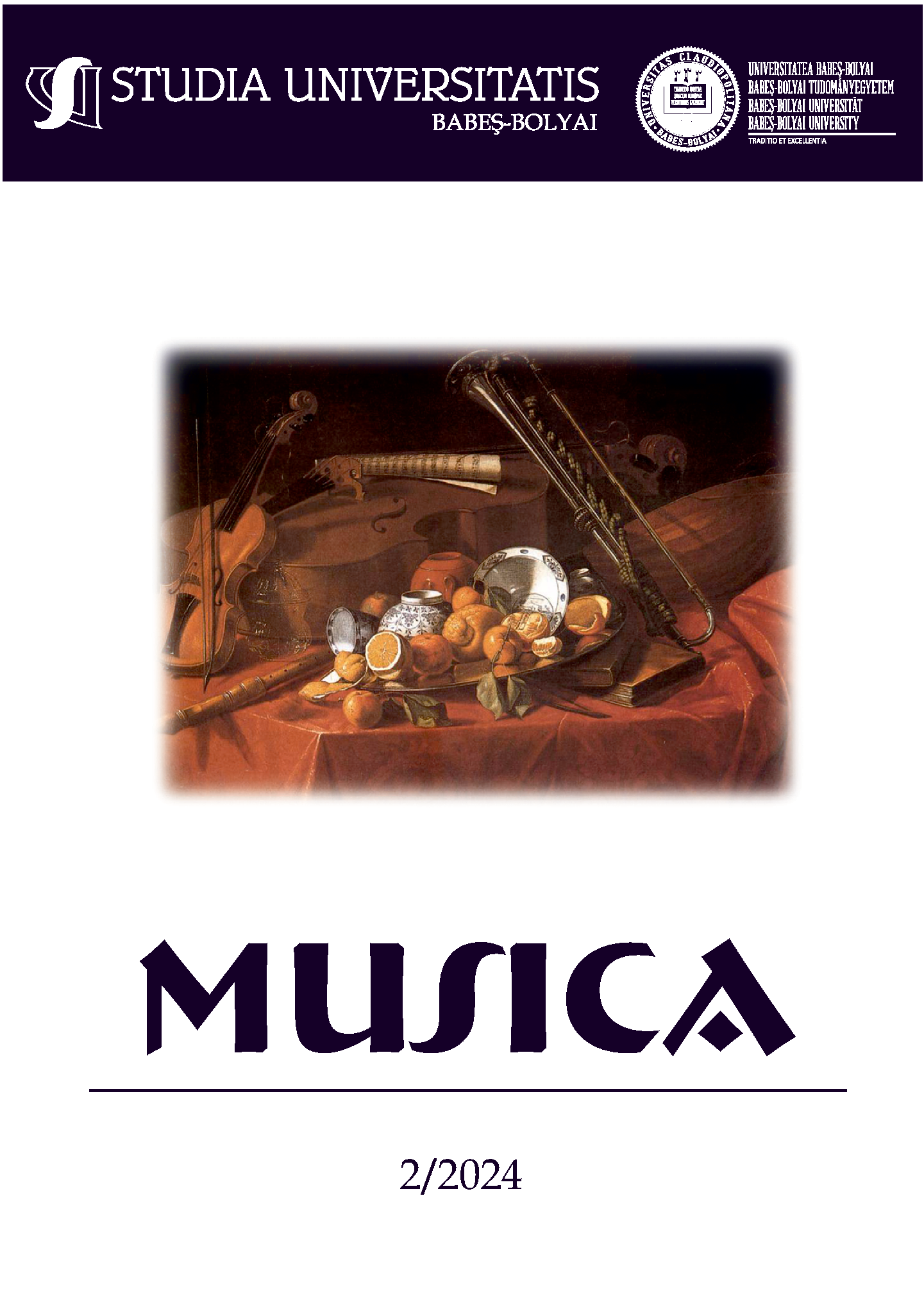William Shakespeare’s Legacy in Vocal Pedagogy: Revolutionizing the Art of Singing Through Breathing Techniques
DOI:
https://doi.org/10.24193/subbmusica.2024.2.04Keywords:
English singing school, vocal pedagogy, breathing techniquesAbstract
The article highlights the significant contributions of William Shakespeare (the vocal coach) to the art of singing in England. His approach reformed vocal pedagogy by focusing on natural breathing techniques, particularly intercostal and diaphragmatic breathing, which helped singers reduce tension and enhance lung capacity. Shakespeare's methods aimed to integrate vocal technique with the unique phonetic characteristics of the English language, ensuring clear diction and strong projection, especially in larger performance spaces like concert halls. His teachings emphasized the importance of breath control and tonal quality, which allowed singers to maintain vocal stamina during demanding performances. Shakespeare’s influence on vocal technique has left a lasting legacy, continuing to shape modern vocal pedagogy. His emphasis on natural breathing set a new standard for singers, blending technical mastery with expressive communication in vocal performance.
References
Bruns, Paul, Minimalluft und Stütze, Berlin-Charlottenburg: Walter Göritz, 1929.
Brown, William Earl, Vocal Wisdom: Maxims of Giovanni Battista Lamperti, N.Y.: Arno Press, Inc., 1966.
Coward, Henry, Choral Technique and Interpretation, London: Novello and Company, Limited, 1914.
Curry, Robert, The Mechanism of the Human Voice, N.Y. – Toronto: Longmans, Green and Company, 1940.
Elgar, Edward, English Vocal Performance,London, 1925.
Garcia, del Pópulo Vicente Rodriguez Manuel, Exercices Pour La Voix: Avec Un Discours Préliminaire, Paris: Petit, 1830.
Garcia, Manuel, A Complete Treatise of the Art of Singing: Complete and Unabridged, New York: Da Capo Press, 1975.
Garcia, Manuel, A Hints on Singing, London: Ascherberg, Hopwood & Crew, 1911.
Garcia, Manuel, Histoire de la Physiologie Vocalique, Paris, 1871.
Garcia, Manuel, A New Treatise on the Art of Singing, London: Cramer, 1870.
Lamperti, Francesco, The Art of Singing, New York: G. Schirmer, Inc., 1890.
Lamperti, Francesco, The Art of Singing, 2nd ed, Edited and translated by J, C, Griffith, New York: G, Schirmer, 1890.
Lamperti, Giovanni B., The Technics of Bel Canto, Translated by Theodore Baker, New York: G, Schirmer, 1905.
Marek, Dan, Singing: The First Art, Lanham, MD: Scarecrow Press, 2007.
Miller, Richard, English, French, German and Italian Techniques of Singing: A Study in National Tonal Preferences and How They Relate to Functional Efficiency, Metuchen, New Jersey; Scarecrow Press, 1977.
Miller, Richard, National Schools of Singing: English, French, German, and Italian Techniques of Singing Revisited, Lanham, MD: Scarecrow Press, 1997.
Miller, Richard, Solutions for Singers: Tools for Performers and Teachers, Oxford: Oxford University Press, 2004.
Shakespeare, William, The Art of Singing, London, 1921.
Slater, David, Vocal Physiology and the Teaching of Singing, London: J.H. Larway, 1972.
Stark, James A, Bel Canto: A History of Vocal Pedagogy, Toronto: University of Toronto Press, 1999.
Titze, Ingo R, Principles of Voice Production, Second printing, National Center for voice and speech Iowa City, SUA, 2000.
White, Brian, Singing Techniques and Vocal Pedagogy N.Y.: Garland Publishing, 1989.
Witherspoon, Herbert, Singing: A Treatise for Teachers and Students 2nd ed., New York: G. Schirmer, Inc., 1925.
Downloads
Published
How to Cite
Issue
Section
License
Copyright (c) 2024 Studia Universitatis Babeș-Bolyai Musica

This work is licensed under a Creative Commons Attribution-NonCommercial-NoDerivatives 4.0 International License.



